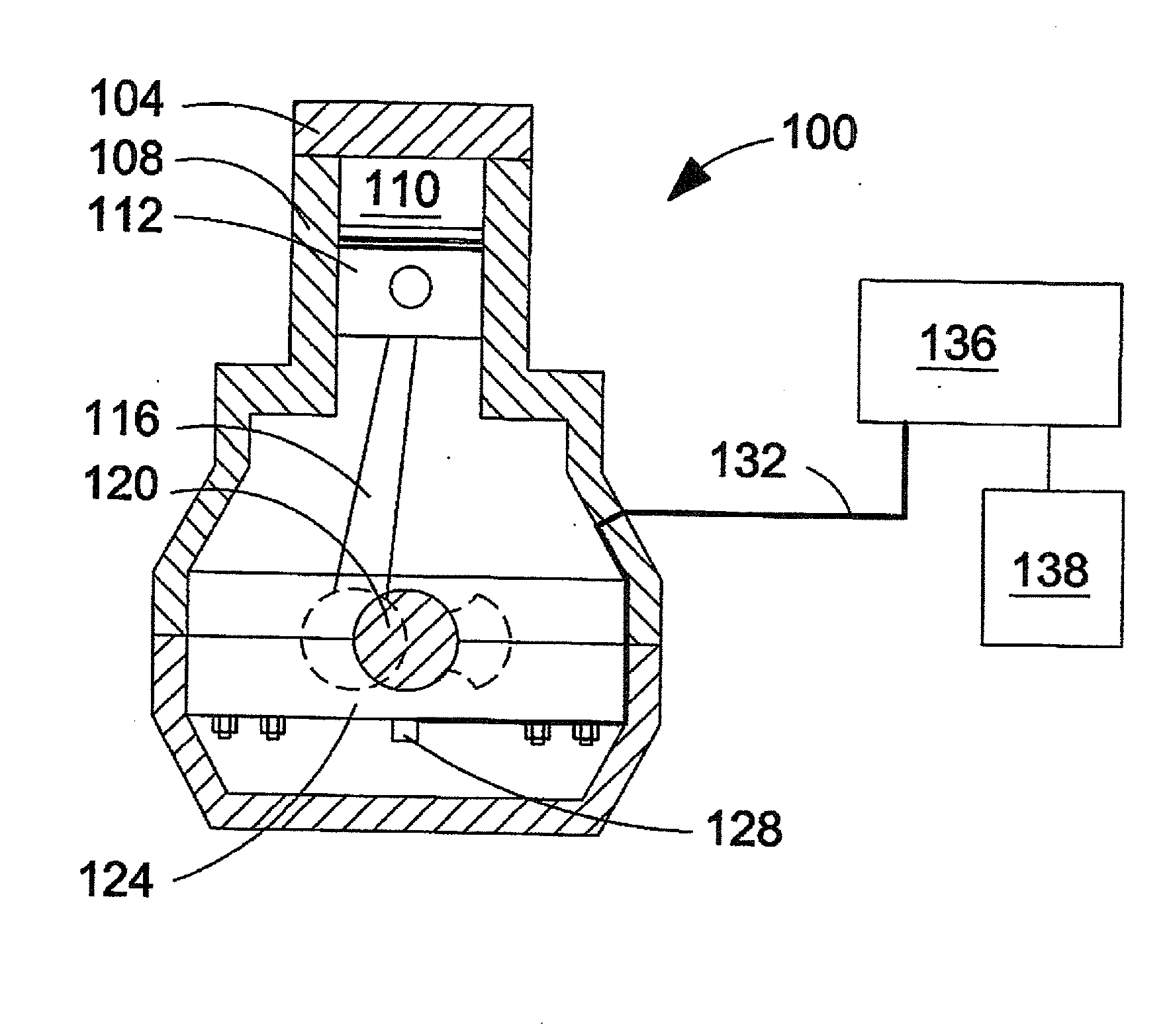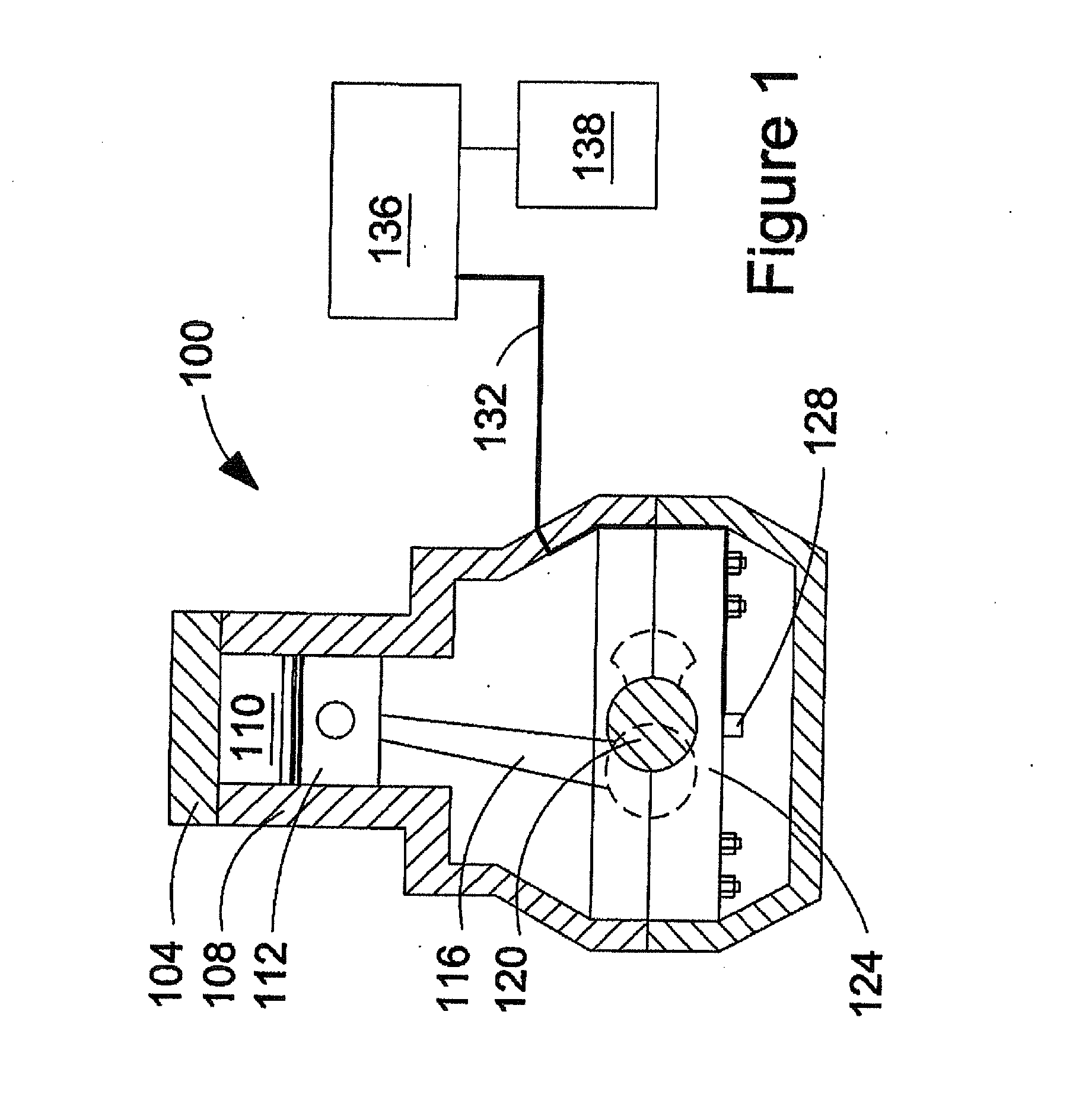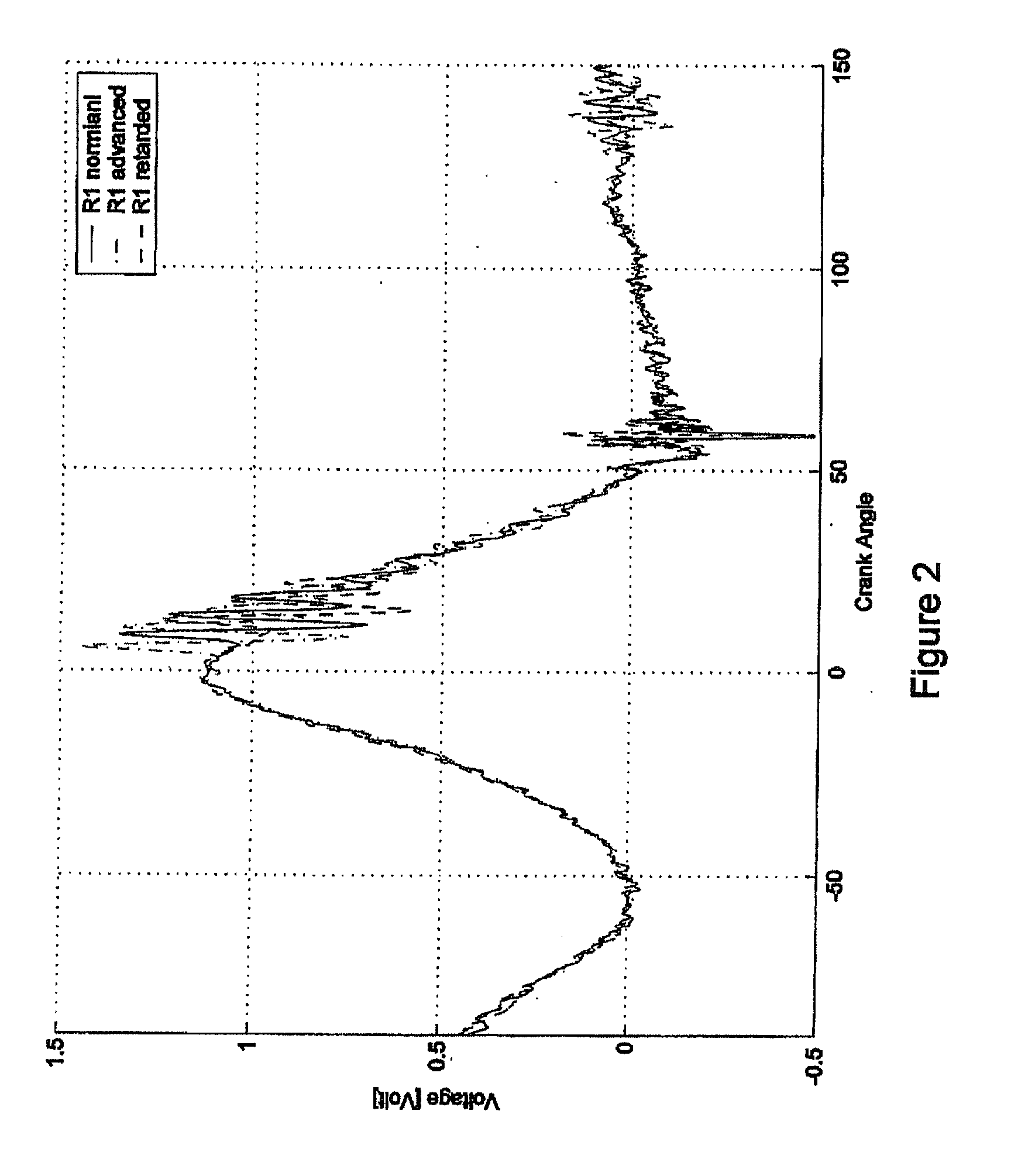Method And Apparatus For Using An Accelerometer Signal To Detect Misfiring In An Internal Combustion Engine
an accelerometer and internal combustion engine technology, applied in engine ignition, structural/machine measurement, analog and hybrid computing, etc., can solve the problems of engine misfire, engine power and performance reduction, inefficient engine operation, etc., and achieve the effect of improving the robustness of the method
- Summary
- Abstract
- Description
- Claims
- Application Information
AI Technical Summary
Benefits of technology
Problems solved by technology
Method used
Image
Examples
Embodiment Construction
)
[0025]FIG. 1, shows by way of example, an internal combustion engine with a control system that can be used to detect misfiring from an accelerometer signal. Engine 100 includes combustion chamber 110, which in this example is defined by cylinder 108, cylinder head 104 and piston 112. For simplicity, only one combustion chamber is shown although persons skilled in the technology will understand that the engine typically has two or more cylinders, and when there is a plurality of cylinders they can be arranged in banks. Piston 112 is reciprocable within cylinder 108, and the reciprocating motion of piston 112 is translated into rotation of crankshaft 120 via connecting rod 116 which is operatively attached at opposite ends to piston 112 and crankshaft 120. Intake and exhaust valves (not shown) operate to deliver charge comprising oxygen from an intake manifold to combustion chamber 110, and to remove exhaust by-products therefrom to an exhaust manifold. Engine 100 further comprises ...
PUM
 Login to View More
Login to View More Abstract
Description
Claims
Application Information
 Login to View More
Login to View More - R&D
- Intellectual Property
- Life Sciences
- Materials
- Tech Scout
- Unparalleled Data Quality
- Higher Quality Content
- 60% Fewer Hallucinations
Browse by: Latest US Patents, China's latest patents, Technical Efficacy Thesaurus, Application Domain, Technology Topic, Popular Technical Reports.
© 2025 PatSnap. All rights reserved.Legal|Privacy policy|Modern Slavery Act Transparency Statement|Sitemap|About US| Contact US: help@patsnap.com



